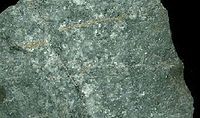
Photo from wikipedia
Throughout the last 35 ka, Mount St. Helens has been the most active volcano in the Cascade arc, but the origin of its voluminous dacites remains controversial. These dacites were traditionally… Click to show full abstract
Throughout the last 35 ka, Mount St. Helens has been the most active volcano in the Cascade arc, but the origin of its voluminous dacites remains controversial. These dacites were traditionally interpreted as a result of melting metabasaltic lower crust. Yet, recent studies have challenged this view and suggested an origin dominated by differentiation of mafic magmas through assimilation-fractional crystallization (AFC) processes. To address this discrepancy on the origin of dacites at Mount St. Helens, we conduct an interdisciplinary study using a combination of thermal and geochemical modeling. Our results show that ~ 45% crystallization of a basaltic andesite parent reproduces the compositions of the dacites with a maximum of ~ 20–30% assimilation of lower crustal lithologies. Amphibole textures and compositions support such a differentiation trend in a polybaric mush system. Combined with recent geophysical imaging and experimental data, we suggest that Mount St. Helens dacites are generated by (1) mantle-derived arc magma evolving by AFC to intermediate compositions in a lower crustal magma reservoir and (2) ascent of these magmas to a mid to upper crustal reservoir, where they reach high crystallinity without significant further chemical differentiation, and are subject to frequent recharge that leave a clear mixing/mingling overprint.
Journal Title: Contributions to Mineralogy and Petrology
Year Published: 2019
Link to full text (if available)
Share on Social Media: Sign Up to like & get
recommendations!